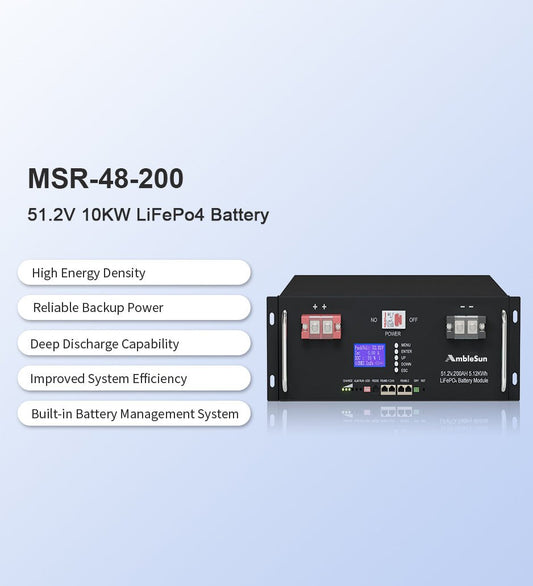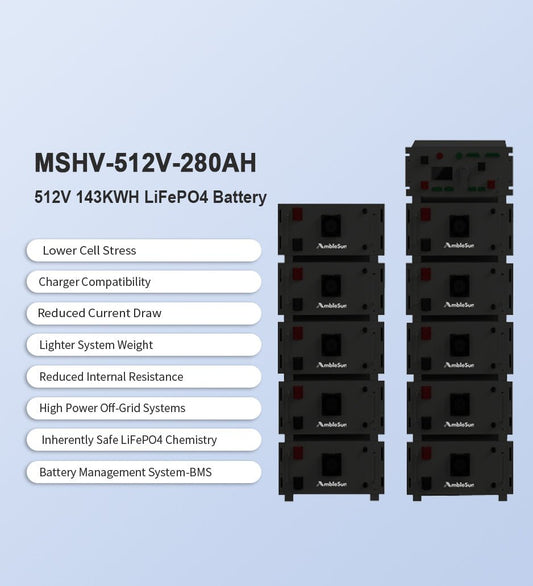Your Cart
Truth Behind Refurbished Lithium-Ion Batteries

The Truth Behind Refurbished Lithium-Ion Batteries vs. New LiFePO4 Battery Packs: Don’t Waste Your Time and Money
When it comes to powering modern technology, batteries are the heart of it all. From electric vehicles to solar energy systems and smartphones to power tools, the right battery pack can make or break your experience. With recent advancements in lithium battery technologies, such as LiFePO4 (Lithium Iron Phosphate), consumers are faced with a choice: should they invest in new battery packs or opt for refurbished ones?
In this blog post, we’ll dive deep into why you should avoid refurbished battery packs, especially when it comes to critical use cases. We’ll also explore the advantages of choosing a new LiFePO4 battery pack, why it’s the superior choice, and how refurbished batteries can be a waste of time, money, and peace of mind.
Table of Contents
- Introduction: The Role of Battery Packs in Modern Technology
- What are Refurbished Battery Packs?
- Understanding New LiFePO4 Battery Packs
-
The Hidden Risks of Refurbished Battery Cells
-
- Performance Degradation
-
- Limited Lifespan
-
- Safety Concerns
-
- Inconsistent Quality
-
-
Why New LiFePO4 Battery Packs are a Superior Choice
-
- Enhanced Safety Features
-
- Longer Lifespan
-
- Consistent Performance
-
- Environmentally Friendly
-
- The Cost Myth: Are Refurbished Battery Packs Really Cheaper?
- Case Studies: Refurbished Battery Failures
- Conclusion: Invest in Reliability and Longevity with New LiFePO4 Batteries
1. Introduction: The Role of Battery Packs in Modern Technology
In today’s world, battery packs are crucial to almost every sector. They power electric vehicles (EVs), store energy for solar power systems, keep our devices running, and support industrial tools. As battery technology evolves, so do the expectations for performance, longevity, and safety.
This is especially true for Lithium Iron Phosphate (LiFePO4) batteries, which have become increasingly popular due to their robust features. However, the choice between refurbished and new battery packs often confuses consumers.
For high-energy applications where reliability is paramount, the importance of choosing the right battery cannot be overstated. Let’s take a closer look at why refurbished battery packs may not be the best option and how new LiFePO4 battery packs shine as the more reliable, long-term solution.
2. What are Refurbished Battery Packs?
Refurbished battery packs are used batteries that have undergone a process of inspection, repair, and reassembly to extend their usable life. This typically involves replacing faulty cells, rebalancing the pack, and repackaging it for resale. While this might sound appealing as a cost-effective option, there are numerous downsides to refurbished batteries that outweigh any initial savings.
The reality is that refurbished battery packs rarely meet the same quality and performance standards as new ones. Factors like wear and tear, cell imbalances, and hidden defects are often overlooked or impossible to correct fully. This leads to compromised performance, reduced longevity, and serious safety concerns, which we’ll discuss in detail below.
3. Understanding New LiFePO4 Battery Packs
Lithium Iron Phosphate (LiFePO4) batteries are a type of lithium-ion battery known for their exceptional safety, longevity, and stability. Unlike other lithium-ion chemistries, LiFePO4 batteries are less prone to overheating and offer better charge/discharge efficiency, making them ideal for a wide range of applications from EVs to renewable energy storage systems.
What makes LiFePO4 battery packs stand out is their superior thermal stability, long cycle life, and consistent power output. When you buy a new LiFePO4 battery, you can expect it to last thousands of cycles—up to 10 years or more in many cases—without significant degradation.
This is why LiFePO4 batteries are the go-to choice for critical applications where safety and reliability are paramount, such as in energy storage systems and electric vehicles.
4. The Hidden Risks of Refurbished Battery Cells
Refurbished batteries come with several risks that make them unsuitable for most high-demand applications. Here are some of the most significant concerns:
1. Performance Degradation
Refurbished batteries are made from cells that have already been used, which means their overall capacity has likely degraded. Over time, lithium-ion cells lose their ability to hold a charge, and even the refurbishing process cannot restore them to their original state. This results in shorter run times, more frequent charging, and reduced efficiency compared to new battery packs.
2. Limited Lifespan
A refurbished battery pack may come with a limited lifespan because the cells inside it have already undergone some level of wear and tear. Even though refurbishers replace damaged or faulty cells, the remaining original cells might be nearing the end of their useful life. As a result, the entire battery pack will likely fail much sooner than a new LiFePO4 battery.
3. Safety Concerns
The safety of refurbished batteries is another major issue. Since the cells in these packs have already been stressed through multiple charge and discharge cycles, there’s an increased risk of overheating, swelling, or even thermal runaway (a dangerous condition where the battery overheats uncontrollably). This is especially dangerous in applications like electric vehicles or home energy storage systems, where a battery failure could lead to property damage or personal injury.
4. Inconsistent Quality
Refurbished battery packs often suffer from inconsistent quality. This is because the cells used in these packs come from various sources and may have experienced different levels of degradation. Even if some cells are replaced, it’s impossible to guarantee that all cells in the pack will perform equally well, leading to imbalances and reduced overall performance.
5. Why New LiFePO4 Battery Packs Are a Superior Choice
While refurbished batteries might seem attractive due to their lower upfront cost, new LiFePO4 battery packs offer unparalleled advantages that make them the far better option. Here’s why:
1. Enhanced Safety Features
LiFePO4 batteries are known for their inherent safety advantages. They are far less likely to overheat or catch fire compared to other lithium-ion chemistries. Moreover, new battery packs come with built-in Battery Management Systems (BMS) that actively monitor and balance the cells, ensuring safe operation. This is a critical feature that refurbished battery packs often lack or have degraded systems.
2. Longer Lifespan
One of the key benefits of new LiFePO4 batteries is their long lifespan. They can easily last for over 3,000-5,000 charge cycles, providing years of reliable service. When you invest in a new battery pack, you’re essentially buying peace of mind, knowing that it will deliver consistent performance for a decade or more.
3. Consistent Performance
New LiFePO4 battery packs deliver consistent, high-quality performance. They maintain a stable voltage throughout their discharge cycle, ensuring that your devices or systems perform optimally without unexpected drops in power. This is particularly important in applications like solar energy storage or electric vehicles, where consistent power is crucial for efficiency.
4. Environmentally Friendly
Although refurbished batteries may seem like a green option, new LiFePO4 batteries are more environmentally friendly in the long run. Their longer lifespan means fewer replacements and less waste over time. Additionally, LiFePO4 batteries are non-toxic and easier to recycle compared to other battery chemistries, reducing their environmental footprint.
6. The Cost Myth: Are Refurbished Battery Packs Really Cheaper?
At first glance, refurbished battery packs may appear to be the more affordable option. However, when you factor in the hidden costs—shortened lifespan, inconsistent performance, frequent replacements, and potential safety hazards—the long-term cost of ownership can quickly outweigh the initial savings.
In contrast, a new LiFePO4 battery pack may have a higher upfront cost, but its longevity, reliability, and safety make it a far better investment. Over time, you’ll save money by avoiding frequent replacements and the associated downtime or repair costs.
7. Case Studies: Refurbished Battery Failures
Let’s take a look at real-world examples where refurbished batteries have caused significant issues. These case studies highlight the potential dangers and costs associated with opting for refurbished battery packs:
-
Electric Vehicle Failures: In one case, a fleet of electric buses using refurbished battery packs experienced multiple breakdowns within months of being put into service. The refurbished batteries could not deliver the required range, leading to costly downtime and eventual replacement with new batteries.
-
Solar Energy Storage: A homeowner who installed refurbished lithium-ion batteries in their solar energy storage system found that the batteries degraded much faster than expected. After just two years, the entire system needed to be replaced, costing them more than if they had invested in new LiFePO4 batteries from the start.
8. Conclusion: Invest in Reliability and Longevity with New LiFePO4 Batteries
In conclusion, while refurbished batteries might seem like a tempting way to save money, the risks and hidden costs associated with them far outweigh any initial savings. From safety concerns to performance degradation and limited lifespan, refurbished battery packs simply cannot compete with the reliability, longevity, and consistent performance of new LiFePO4 battery packs.
For critical applications like electric vehicles, renewable energy storage, or even everyday devices, investing in new LiFePO4 batteries is the smart choice. You’ll enjoy the peace of mind that comes from knowing your battery pack will perform reliably for years, with minimal maintenance and maximum safety.
No comments
















0 comments